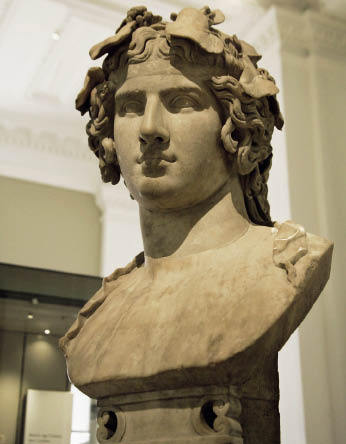The Greek and Roman Collections
Sculpture Promenade 2010
Fitzwilliam Museum, Cambridge, until 28 January 2011
Virgil was wrong — don’t be afraid of Greeks bearing gifts, particularly if you’re a British regional museum. While our government has cut its grant to the Fitzwilliam by two per cent, Greek zillionaires have stepped admirably into the breach to subsidise the renovation of Cambridge’s heart-stopping Greek and Roman gallery, untouched since the Sixties. The Greek Ministry of Culture has chipped in, too; it may want the Elgin Marbles back but it’s happy to pay for Cambridge’s classical treasures to stay put, even while the Greek economy is on the skids.
Its prized euros have been well spent. The Fitzwilliam’s classical collection is the third best in the country, after the British Museum and the Ashmolean. Like the Ashmolean, the Fitzwilliam has benefited from several centuries’ worth of generous classics-obsessed professors and alumni.
Chief among those generous bequests is a vast, delicate marble bust of Antinous as Dionysus, vine leaves and grapes carved into his straggly hair. Antinous was the beautiful young Elvis lookalike the Emperor Hadrian fell so heavily for. When Antinous drowned in the Nile in 130AD, Hadrian was inconsolable, writing a death lament for his animula vagula blandula (‘roaming, caressing, little soul’). There were statues of Antinous all over the Empire, but this one came from Hadrian’s own private playground, his villa at Tivoli, just outside Rome, and was sculpted after the boy’s death. So this is the statue the emperor stared mournfully at every evening over the Falernian wine and the dormice dipped in honey.
Other matchless finds from Tivoli include a pair of Corinthian pilaster capitals, their acanthus leaves carved to razor sharpness, and the charming Lansdowne Relief — a black marble frieze with playful little Argonauts resisting the Sirens and dodging the man-eating Stymphalian birds with their bronze beaks and metal feathers.
There’s plenty more day-to-day stuff, revealing little glimpses of ancient life: a pair of 450BC strigils, the bronze and copper alloy bracelets the Greeks and Romans used to scrape off the perfumed oil they slathered over their bodies; a Roman Swiss army knife from 200AD, with an iron blade, silver spoon, fork, spatula and a spike for extracting meat from snails.
The prize for best classical joke goes to a 500BC Greek kylix, or drinking cup, with a picture of a naked reveller with a lyre. In 1937 Professor Ricketts, an eminent Cambridge classicist, was so upset at the reveller’s lack of genitalia that he painted some in himself. Over the past 70 years, the ancient red and black paint has survived beautifully intact, while Professor Ricketts’s addition has faded, leaving an odd, black, blurry smudge. Old-fashioned dons didn’t always edit out the rude stuff; but they didn’t usually add it in.
After these rich treasures, the works at the Fitzwilliam’s second annual Sculpture Promenade are a bit of a palate-cleanser. If a Martian landed on Trumpington Street, he’d think the intricately worked classical art had just been made, and that the 14 plain, angular, abstract works scattered along the Fitzwilliam’s forecourt were sculpted by a primitive generation.
That’s not to say they don’t have a simple beauty. Angela Conner, Barbara Hepworth’s old pupil, has contributed two vast stainless-steel disks — divided into wavy chunks — and a carbon resin lightning bolt, which flap lazily in the wind; and there’s plenty of that around here, whipping in across the Fens straight from Siberia.
Rob Ward has three mirror-polished stainless-steel combinations of balls, truncated ladders, circles and buttresses, capturing oddly shaped reflections of the museum and the Georgian terrace opposite.
An observant Martian would spot the progress man has made in materials over the past 2,500 years, alongside the decline in skill. Nick Turvey uses Corten steel to produce an enormous rusty-red Slinky crawling along the front lawn; Nick Hornby goes for resin for his truncated white torso skipping through the Fitzwilliam’s portico.
Certainly the warped, aimless, swaying lines of the modern sculptures contrast pleasantly enough with the museum’s static Corinthian order. And a new survey shows that last year’s Sculpture Promenade brought in thousands of first-time visitors to see the treasures inside the museum — the real treasures, I’d say — and that can’t be a bad thing.






Comments